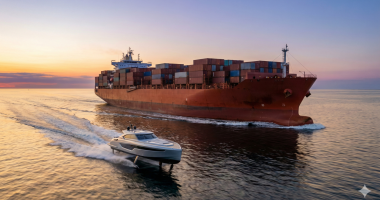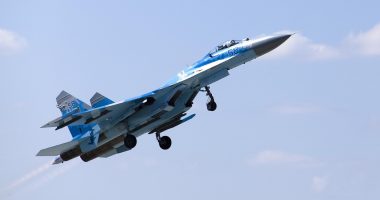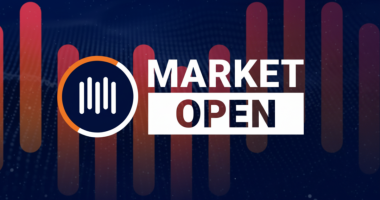The following is a transcription of the above video and has been edited for clarity:
Our next company is an exploration and production company focused on building Latin America’s next energy platform. LNG Energy Group (TSXV:LNGE) is rapidly expanding production using its industry, financial and operational expertise.
The Market Herald Canada sat down with Chairman and CEO Pablo Navarro, who spoke about the company and its recent projects.
TMH: For members of our audience who may not be aware, can you please provide some background on LNG Energy?
Navarro: Absolutely. LNG Energy Group is a newly listed company. We went public on the TSXV on Sept. 12 of this year. We basically completed the acquisition of the Colombian exploration and production assets of a private upstream company called Lewis Energy Group, which is the third largest producer of natural gas in the state of Texas.
We completed this acquisition on Aug. 15 and subsequently, we went public on Sept. 12 of this year. Just by way of background and as you mentioned, I’m the chairman and CEO of the company. I was at Bank of America for 12 years. I was the head of energy investment banking for Latin America and also oil field services globally. Before that I was at Citigroup, also doing energy investment banking and then before that I started my career in the oil and gas sector with BP.
Just to give you some context on our business at LNG Energy Group, we’re really a natural gas focused company. Around 93-95 per cent of our production is natural gas, the rest is rich with high API condensate. We have five blocks in Colombia, where we’re the operator of these blocks, which basically gives us technical and operational control over the assets.
One of our blocks is a main producing block, which is the SSNJ-1. We have a number of other blocks, four other blocks, which can be categorized in the spectrum of development/exploration blocks. Some of them have existing discoveries and so on, and fields are producing at some point.
They range in the spectrum of risk, so to speak, or exploration risk. We have a 50 per cent working interest in four of those blocks in partnership with the HOCOL, which is a subsidiary Ecopetrol, the Colombia National Oil Company. We also own 100 per cent of one of the blocks, which is called VIM 41, which is a block that has an existing discovery as I mentioned before.
Now it is important to mention, Ryan, that all these blocks are in the northern part of Colombia. This is a very promising area on our main producing field and our kind of central operations hub. It’s in an area that was or used to be considered a frontier basin. The former owner, Lewis Energy, basically developed this assets from scratch and developed this play concept in the Bullerengue field around the Chengue formation.
These blocks are close, very close to Barranquilla, which is one of the main cities in Colombia and also to Cartagena, which I’m sure you heard of before. Basically, what’s attractive about this, Ryan, is that we’re an area where there’s a very premier and premium in natural markets for our gas that we produce where there’s significant demand centres and basically where we have access to a lot of infrastructure and to be able to deliver our gas to the market, we’re connected directly into the main distribution points.
We deliver gas directly by pipeline at ease of Lopez Citygate and what’s important also to mention is that our location is super important in terms of us being able to realize high netback because again, we deliver gas to some of the main areas or demand centres for natural gas and we virtually have no transportation costs.
Our realization on the price that we sell the gas is very attractive. From our main producing field, we produce around 38 million BTUs gross. We own 50 per cent of that, which is an increase of 50 per cent versus where production was a year ago. We’re looking to significantly grow our production over the next few years.
We have big aspirations being a new entrant to the market and even though this is a new company, it’s not a startup, we’re a cashflow generating company and one final aspect that is very important to mention about our business model is that we’re a vertically integrated company.
We own three rigs, two of them drilling rigs, one workover rig. What that does is allows us to be efficient in terms of cost management of the wells that we drill but importantly also to have control of our own destiny in terms of the pace of our drilling campaign. And that’s a huge factor in terms of being able to control what flows from the top line to the bottom line.
We just recently launched our drilling and work-over campaign about a month ago. We will have soon news flow in terms of our drilling activity, and we’re planning to drill at least three to four wells in 2024.
TMH: The company recently released its Q3 financial results. Walk us through these results and what they mean for the exchange.
Navarro: Absolutely. So big caveat: As I mentioned earlier, we completed the acquisition of Lewis Energy Colombia on Aug. 15. So, the results that were released recently only captures a period on which we have been the owner of the asset. Basically, from Aug. 15 to the end of the quarter and Sept. 30, so basically half a quarter or 45 days give or take.
Important to mention that in our producing blocks in San Jacinto 1, we pay about 25 per cent in royalties. If you extrapolate our Q3 results, we generate around $40 million in annual revenue.
Basically, just extrapolating the sort of half a quarter times four, this is driven by a strong and stable working interest production of around 18 million cubic feet a day and around 200 barrels net to LNG. Important to highlight that these volumes are sold to AAA-rated counterparties under their long-term take-or-pay contracts.
In fact, we recently entered into additional four- to five-year contracts with prices that are quite attractive relative to international markets. Just to give you an idea, to put it in perspective, for next year, in 2024, we expect that our average sales price we read will be around $7.50 per MCF. That compares to around $2 or $3 for instance, in the U.S. if you compare it to Henry Hub.
With these new additions essentially of these contracts, basically all of our proved developed producing, our base production is contracted through 2028 and this should represent at least 25 per cent increase just by increasing the prices relative to where we were selling this year.
Also, importantly, our netbacks, as I mentioned before because of the fact that we’re in – and that’s really a consequence of being in a strong demand center like Barranquilla and Cartagena or in that part of the country and the fact what I mentioned before that we had no transportation costs, you see basically that our netbacks are very strong of around $4.35 per MCF give or take.
TMH: During a presentation at a recent Natural Resources Conference, LNG energy detailed its commitment to responsible natural gas development, along with building and maintaining strong community relationships. Tell us about the value of this approach.
Navarro: We have a number of programs that are dedicated to sustainability and importantly to the success of our surrounding communities. We’re 100 per cent dedicated to producing natural gas in a responsible way and to deliver growth in a responsible fashion.
We have or we are targeting to reduce our carbon footprint by 50 per cent by 2030 and to prove that, since 2018, the company has reduced emissions by over 10,000 tons of CO2 equivalent and we’re currently working on projects right now to capture and reduce another 40,000 tons by 2028. So, we’re very committed to accomplishing this type of goal but at the growth that we’re envisaging in a responsible way and in accordance to the highest environmental standards.
I will highlight that over the years we have established and cultivated strong relationships with the communities in which we operate, and I’ll give you an example, one of the programs that we sponsor, which is called Energía Educativa. Basically, with strengthened basic science and math skills with an open digital ecosystem tool that improves the education of children and teachers.
Through this program, we have touched and impacted the livelihoods of over 19,000 students and 700 teachers in the local communities in which we operate, basically furthering their education and basically trying to set them up for success or contribute them to their success and we have combined this program with other initiatives.
I mean, this is just one of the initiatives that we have in place but what’re really proud of (is) what the team has accomplished in terms of working with the communities.
TMH: From what I understand, the company has a broad project portfolio. Can you share details about some of these projects?
Navarro: That is absolutely correct. We have a very vast inventory of acreage that we can develop over the next several decades, and as I mentioned before, we have five blocks that are different stages of maturity, which cover basically an area of 800,000 acres in total. As you can imagine, this is a very extensive and vast portfolio.
We have developed, basically, the main producing gas field that we have at the moment, which is Bullerengue Gas field, which also has, think about it this way, it’s a very large oil gas field that basically has multiple compartments and that can help us deliver growth by de-risking and developing further compartments and further extensions of the structure that we’re producing today.
We also have the VIM-41 block, which we own at 100 per cent, where there’s an existing discovery called the Brillante Field that has around 10 BCFE of proved reserves that we’re looking to exploit and deliver to marketing in the next few years and additionally, we have identified a substantial exploration portfolio which has prospects, inventory or own risk resources that we have identified north of one TCF of gas.
So altogether today we have around seven years of reserve life based on PDP, we developed producing production and around 14 years of reserve life based on a 2P basis, which if you compared to the peers is quite substantial.
TMH: In terms of investment value, where do you see your company going over the next year or so?
Navarro: Even though as I mentioned before that LNG Energy Group is a new company, it is not a start-up, it is a company, basically it’s a culmination, or start if you want, of the new phase of a company that had been operating for the past 17 years.
So we acquired a cash flow in business, which is Lewis Energy Colombia, with a very strong 17 years of track record in the country and internationally and additionally, the Lewis team that is our partner and one main shareholder in this company brings more than 40 years of experience in the oil and gas industry with a team that basically has been directly involved in drilling over 3,000 wells over the course of their careers. As you can imagine, it’s a very unique talent base that we have access to.
Importantly, the new take-or-pay contracts that I spoke about for natural gas sales will deliver a significant revenue growth and cash-flow growth and EBITDA growth over the next few years. One thing that is important to mention or highlight in terms of a differentiating factor of this platform and this entity relative to the strategy of maybe all the companies.
The focus for LNG Energy Group and the predecessor entity was basically to maximize not initial production rates of wells but basically to maximize the reserve life and try to deliver a stable production for a number of years with zero to flat decline rate basically and produce at a plateau for a number of years.
That is important, Ryan, because that gives us or provides reliability to our off takers, which is a huge, differentiated factor quite frankly, if you ask me.
You can find LNG Energy Group on the TSX Venture Exchange under the symbol V.LNGE or head to its website lngenergygroup.com for more information.
Join the discussion: Find out what everybody’s saying about this stock on the LNG Energy Group Bullboard investor discussion forum, and check out the rest of Stockhouse’s stock forums and message boards.
The material provided in this article is for information only and should not be treated as investment advice. For full disclaimer information, please click here.



